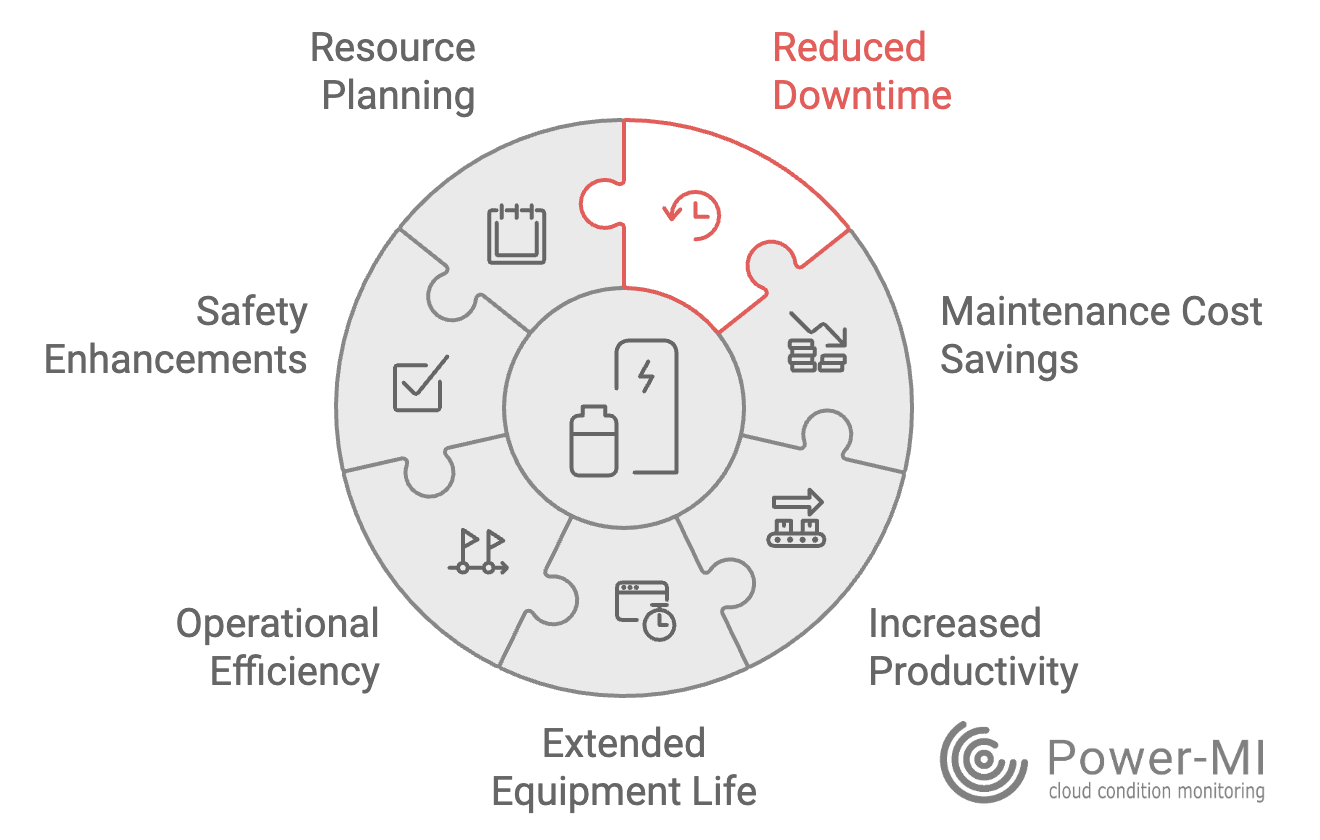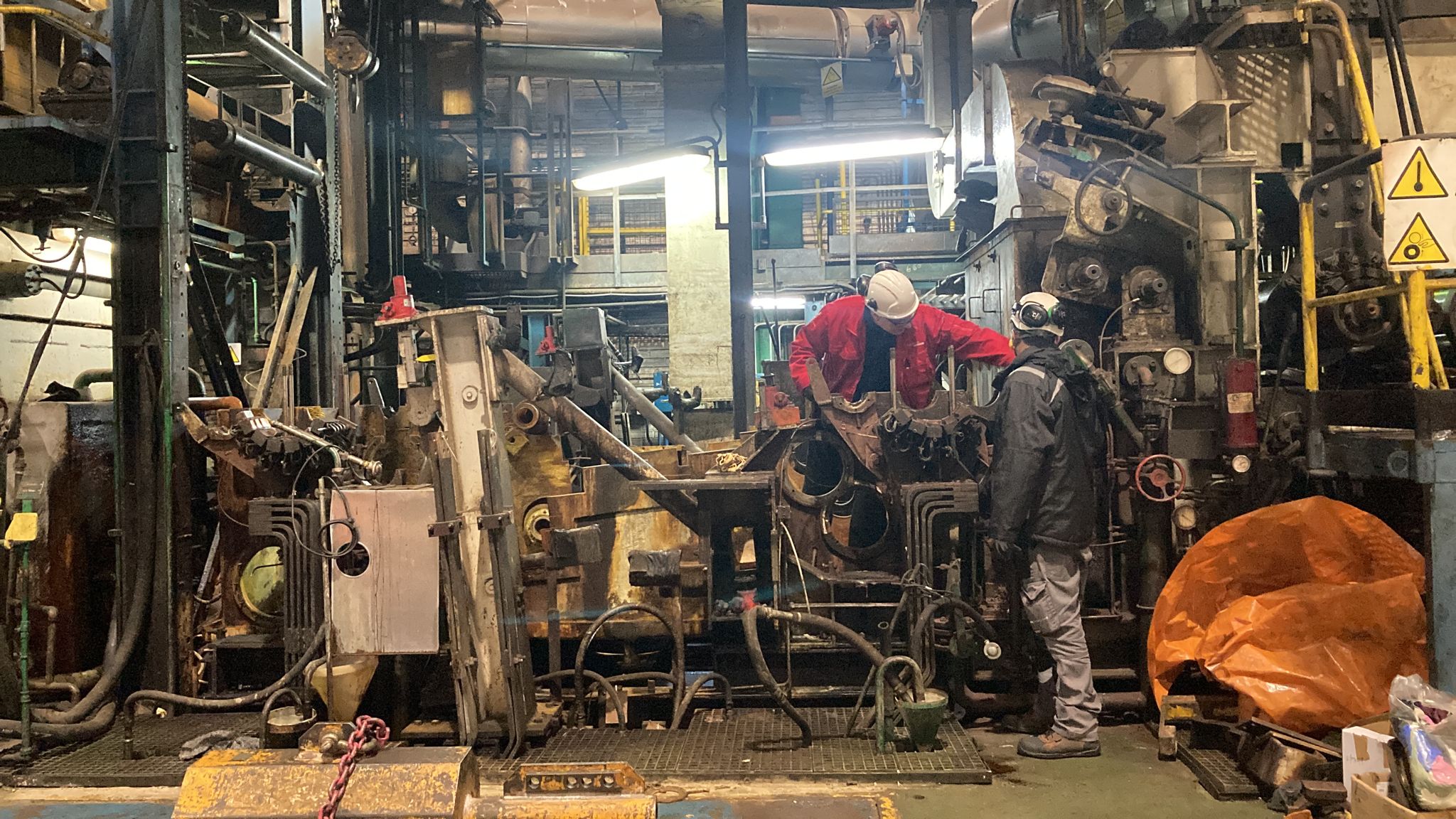The Economic Benefits of Condition-Based Maintenance

Over the years as a provider of condition-based maintenance technology, I've noticed a rather curious trend. Most hardware sales are in the final months of the year, precisely when maintenance departments are closing their budgets. It's common practice for maintenance managers with leftover funds to purchase condition monitoring equipment, either to justify their current budget or to prevent cuts in the following year. While this might seem like a savvy strategy, it actually highlights a deeper issue: the need for a solid economic justification for condition-based maintenance (CBM) and the investments it requires. Investing without proper financial analysis makes it challenging to later recognize the financial benefits that CBM can offer, and often these economic benefits are neither visualized nor considered.
This lack of economic visibility underscores the importance of highlighting the tangible financial benefits that condition-based maintenance can offer. In this post, we will delve into the often-overlooked economic advantages of implementing CBM in industrial operations. By exploring how CBM leads to substantial cost savings and revenue enhancements, we aim to shed light on its true value to an organization. This discussion is particularly relevant for maintenance managers, plant managers, reliability engineers, and industrial engineers seeking to enhance their operations' efficiency and financial performance.
Condition-Based Maintenance Must Be Profitable
Implementing CBM involves significant investment in technology, training, and process transformation. Sensors, data acquisition systems, software and skilled personnel are essential components of a successful CBM program. Therefore, it is imperative that CBM delivers a clear return on investment (ROI) to justify these costs. Profitability is not just a desirable outcome but a necessary one for the sustainable adoption of CBM.
CBM must be profitable because:
- Resource Allocation: Companies need to allocate financial and human resources effectively. Investments in CBM should compete favorably with other potential investments.
- Operational Sustainability: Profitability ensures that the CBM program can be maintained and scaled over time.
- Stakeholder Confidence: Demonstrating profitability boosts confidence among stakeholders, including management, investors, and employees.
By focusing on profitability, organizations can ensure that their CBM initiatives contribute meaningfully to their strategic objectives.
Reduced Downtime and Improved Equipment Uptime
The Cost of Downtime
Equipment downtime is one of the most significant drains on profitability in industrial operations. Unplanned downtime leads to production losses, missed deadlines, and decreased customer satisfaction. According to a study, large industrial plants lose an average of 323 production hours per year, with the average cost of downtime amounting to $532,000 per hour, or $172 million per plant annually.
How CBM Reduces Downtime
CBM reduces downtime by:
- Early Fault Detection: By continuously monitoring equipment condition, CBM identifies potential failures before they occur.
- Scheduled Maintenance: Maintenance activities can be planned during non-peak hours, minimizing production disruptions.
- Root Cause Analysis: CBM tools help diagnose the underlying causes of equipment issues, preventing recurring problems.

Reduced Maintenance Costs
Financial Burden of Traditional Maintenance
Traditional maintenance strategies, such as reactive or time-based maintenance, often result in unnecessary part replacements, excessive labor costs, and increased downtime. These approaches can lead to over-maintenance or under-maintenance, both of which are costly.
Cost Reduction through CBM
CBM optimizes maintenance activities by:
- Targeted Interventions: Maintenance is performed only when necessary, based on equipment condition.
- Extended Component Life: By avoiding unnecessary replacements, components are used to their optimal lifespan.
- Labor Efficiency: Maintenance personnel focus on critical tasks rather than routine checks.
Increased Productivity
Impact of Maintenance on Productivity
Frequent equipment stoppages and inefficient maintenance practices disrupt production schedules, leading to lower output and reduced revenue.
Enhancing Productivity with CBM
CBM enhances productivity by:
- Maximizing Equipment Availability: With reduced downtime, equipment is available for production more often.
- Optimizing Production Planning: Predictable maintenance schedules allow for better coordination of production activities.
- Reducing Bottlenecks: By preventing unexpected failures, CBM eliminates production delays caused by equipment breakdowns.
Extended Equipment Life and Reduced Replacement Costs
Costs of Equipment Replacement
Replacing industrial equipment involves high capital expenditure, including the cost of new equipment, installation, and the downtime during the replacement process.
Prolonging Asset Life with CBM
CBM contributes to extending equipment life by:
- Preventing Severe Damage: Early detection of issues prevents minor faults from escalating into major failures.
- Optimizing Operating Conditions: Monitoring ensures equipment operates within optimal parameters, reducing wear and tear.
- Informed Decision-Making: Data on equipment health informs decisions about refurbishments or upgrades instead of full replacements.
Improved Operational Efficiency
Operational Challenges
Inefficient maintenance practices can lead to suboptimal resource utilization, increased operational costs, and reduced competitiveness.
Efficiency Gains through CBM
CBM improves operational efficiency by:
- Data-Driven Decisions: Real-time data enables informed decision-making regarding maintenance and operations.
- Integration with Systems: CBM systems can be integrated with other operational technologies for holistic improvements.
- Resource Optimization: Efficient scheduling of maintenance activities reduces idle time for both equipment and personnel.
Increased Safety of People and Processes
Safety Risks Associated with Equipment Failures
Equipment failures can pose significant safety hazards, leading to accidents, injuries, or environmental damage.
Enhancing Safety with CBM
CBM enhances safety by:
- Preventing Accidents: Early fault detection reduces the likelihood of catastrophic failures.
- Ensuring Compliance: Regular monitoring ensures equipment meets safety standards and regulations.
- Reducing Emergency Repairs: Minimizing unplanned maintenance reduces exposure to hazardous situations.
Better Resource Planning
Challenges in Resource Allocation
Unpredictable maintenance needs make it difficult to plan for labor, materials, and budgets, leading to inefficiencies and increased costs.
CBM Facilitates Efficient Planning
CBM improves resource planning by:
- Forecasting Maintenance Needs: Predictive analytics provide insights into future maintenance requirements.
- Optimizing Inventory: Knowing when parts will be needed reduces inventory carrying costs and stockouts.
- Budgeting: Predictable maintenance schedules enable more accurate budgeting and financial planning.
Implications
Competitive Advantage
Organizations that adopt CBM gain a competitive edge through increased operational efficiency, cost savings, and improved product quality.
Technological Advancements
Advancements in IoT, AI, and machine learning have made CBM more accessible and effective. These technologies enhance data collection and analysis capabilities, leading to better predictive maintenance outcomes.
Future Prospects
The future of CBM looks promising, with potential developments including:
- Advanced Analytics: Enhanced predictive models for more accurate failure predictions.
- Integration with Industry 4.0: CBM as a key component of smart manufacturing and digital transformation initiatives.
- Scalability: Improved scalability for CBM solutions, making them viable for small and medium-sized enterprises.
Conclusion
Condition-Based Maintenance is not just a maintenance strategy but a critical business decision that significantly impacts profitability. By reducing downtime, lowering maintenance costs, increasing productivity, extending equipment life, improving operational efficiency, enhancing safety, and facilitating better resource planning, CBM offers substantial economic benefits.
For maintenance managers, plant managers, reliability engineers, and industrial engineers, adopting CBM can lead to improved financial performance and a stronger competitive position in the market. As technological advancements continue to enhance CBM capabilities, organizations that invest in this strategy are likely to reap even greater benefits in the future.
Key Takeaways
- Profitability is Essential: CBM must deliver a clear ROI to justify the investment.
- Downtime Reduction: CBM significantly reduces both planned and unplanned downtime, leading to substantial cost savings.
- Maintenance Cost Savings: Targeted maintenance interventions lower labor and material costs.
- Increased Productivity: Improved equipment uptime leads to higher production output.
- Extended Equipment Life: Proactive maintenance extends the lifespan of assets, reducing capital expenditure.
- Operational Efficiency: Data-driven decisions enhance overall operational effectiveness.
- Enhanced Safety: Early fault detection reduces safety risks and ensures compliance with regulations.
- Better Resource Planning: Predictive insights facilitate efficient allocation of resources and budgeting.
- Technological Integration: Advancements in technology make CBM more effective and accessible.
- Competitive Advantage: Organizations implementing CBM gain a strategic edge in their industry.
References
- The True Cost Of Downtime. (2020). Senseye Ltd.
- How Much Money Can Predictive Maintenance Save An Industrial Company? Power-MI Blog. Accessed on November 20, 2024.
- How Predictive Maintenance Reduces Plant Downtime. Power-MI Blog. Accessed on November 20, 2024.
- Challenges in Implementing Condition-Based Maintenance. Power-MI Blog. Accessed on November 11, 2024.
- The P-F Curve: A Cornerstone in Condition-Based Maintenance. Power-MI Blog. Accessed on October 29, 2024.
- The History and Evolution of Condition-Based Maintenance. Power-MI Blog. Accessed on October 21, 2024.
- Aberdeen Group. (2016). The Cost of Downtime: Fortune 500 Manufacturing Industries. Aberdeen Research.
- PwC Study. (2017). Predictive Maintenance 4.0. PwC Germany.
Note: All sources were accessed on November 20, 2024.
What is Power-MI?
Power-MI is a cloud based solution that allows you to design & manage your condition-based maintenance plan integrating all techniques into one platform. Easy reporting, automatic work orders and CMMS integration.
Read more